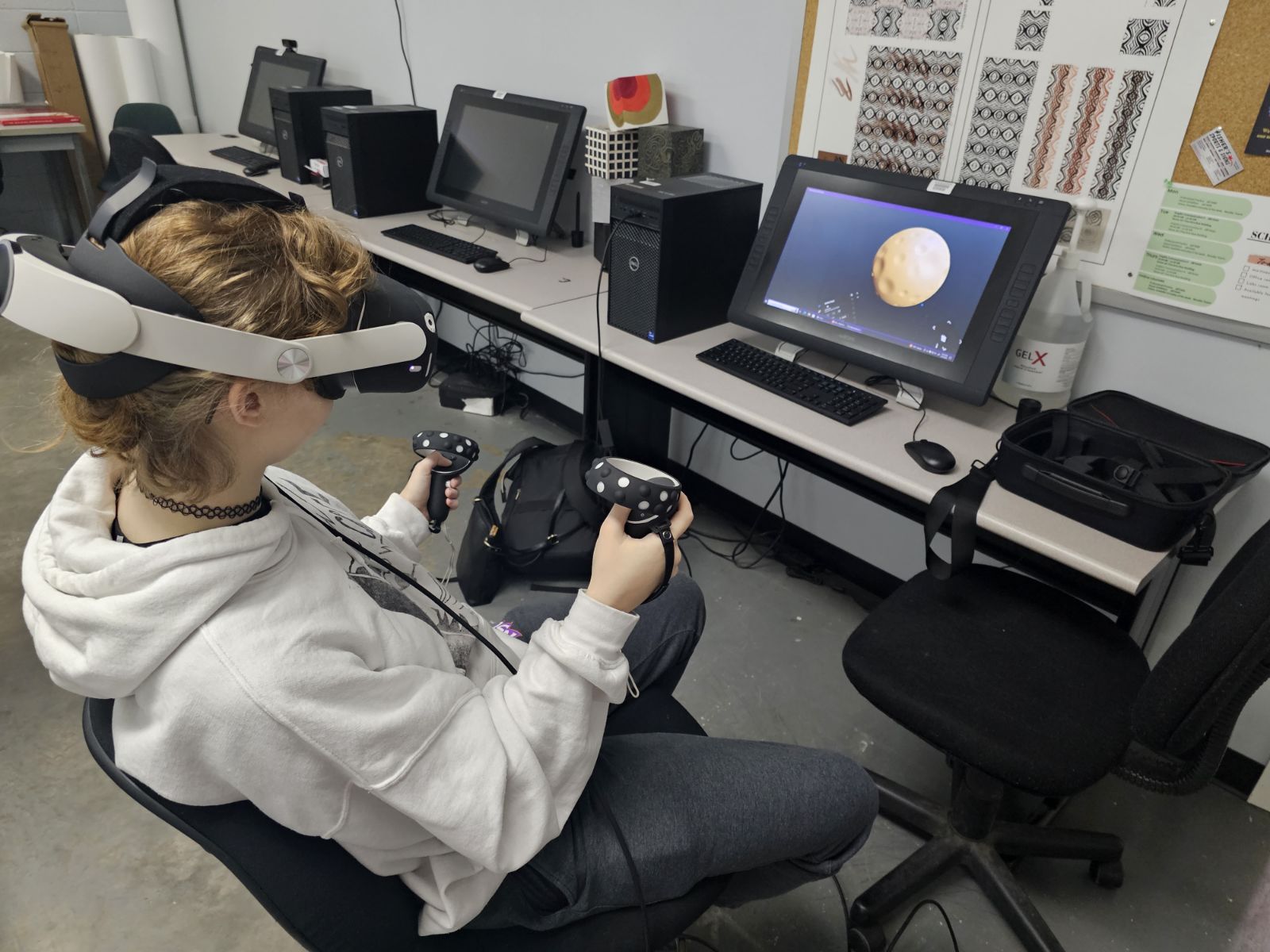NATCHITOCHES – Northwestern State University’s Department of Fine and Graphic Arts is giving students the new experience of using new 3D modeling software.
A class taught by Associate Professor of Art Corbin Covher is using Meta Quest virtual reality headsets with Adobe’s Substance software.
“Traditional 3D modeling software utilizes a mouse and the keyboard to manipulate functions, move things around and try to make something,” said Covher. “With 3D modeling in virtual reality, you are in a three-dimensional space creating things in 3D with both hands. It is easily 100 times faster than using a mouse and sculpting something in real life.”
Junior art major Taylor Boulas said the software has helped him overcome the struggle of being creative in 3D.
“To use the software, you create simple shapes and then you can manipulate it as you please,” said Boulas. “The first time using the software it took me about an hour to feel comfortable and confident enough to try making something new. I found it simple and better than using a mouse.”
Covher said the class is producing sculptures to be printed on a 3D printer. The software also supplies a way to create landscapes for video games which Covher says is of huge interest to art students.
Fine and Graphic arts major Colton Bailey of Rosepine is also using modeling software for the first time.
“The software in question while using the virtual reality can best be described as painting in the air with shapes,” said Bailey, a junior who a concentration in studio art. “I am able to make a model from thin air and work on it from any viewing angle I would like, with nothing but the model and myself in my sight due to the black background of the software while the virtual reality is on.”
Bailey said the setup is relatively simple but there are some bug issues that sometimes need to be resolved which is just simply relogging into the software or turning off and turning back on the headset.
“When first using the virtual reality with the software there is a learning curve but after an hour or two the basics are understood,” said Bailey. “Learning the software on virtual reality was faster than on the computer for me. The software is very easy to use on the virtual reality and allows you to make organic structures in it that would take a significant amount of time on the desktop.”
Bailey said virtual reality has helped boost his creativity significantly given the range of motion the virtual reality provides in it.
“However, that being said, I like to use virtual reality as a supplementary tool,” said Bailey. “I will construct a base model of simple shapes on the desktop, then I will use virtual reality to add further detail or organic elements that would be time consuming on desktop.”
Covher said next semester his students will work with Shapelab software.
Caption
NSU student Victoria Bell using virtual reality software recently obtained by the Department of Fine and Graphic Arts.

